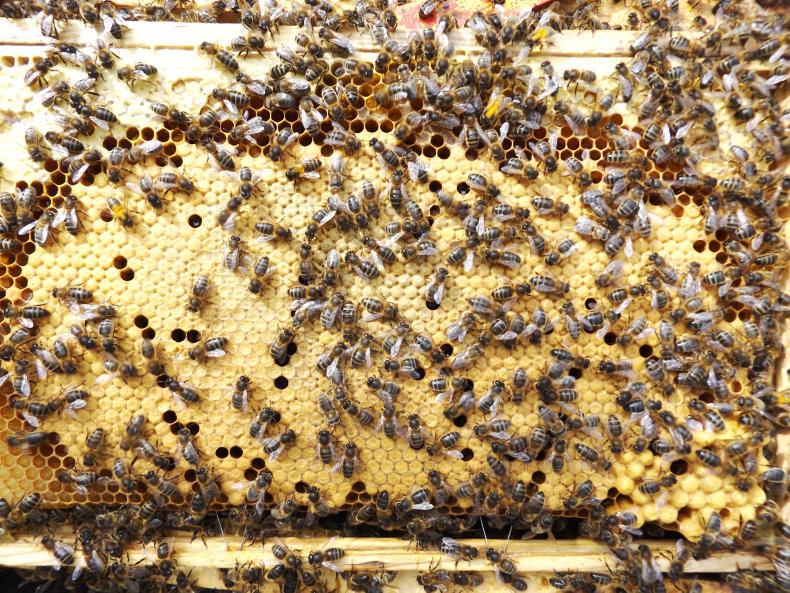What a great start and boost our honeybees got from the wonderful crop of dandelions early on. Congratulations to T.I.I. for not mowing them from the roadside verges during bloom. The sycamore, apple, horse chestnut and holly were some of the trees which all flowered at the same time. Bees did not know which way to turn, with such choice. For many years, I have seen the weather get wet and windy once the sycamore came into bloom, but not so this year. One could hear the hum of the bees from a distance as they avidly worked the catkins. Bees worked apple blossom and holly, with great vigour. They choose flowers producing the highest concentration of sugars. This could prove fatal for the pollination of plants producing lower concentrations. However, nature takes care, so some plants are producing sugars at varying times of the day under varying conditions and bees are tuned into this.
Bees came out of the long winter and straight into full swing, filling the hives with brood and bees. Normally the build-up is slow, which is expected during spring, but this year was exceptional in the way bees left the “starting gates”. Beehives, full of bees, means brood rearing is going at a pace. This brings its’ own problems, firstly, the risk of swarming, and secondly, an increase in varroa mites. Varroa mites align their reproduction with that of the bee. The swarming part can be sorted out by the beekeeper using technical methods. Varroa is not as simple. The varroa mite occupies the same cell as the bee, hiding below the larval food, breathing through a tube until the food is used up. As the cell with the bee matures, the mites damage the larva. When the bee hatches from the cell, so too do some of the mites. Apart from the damage done to the worker and drone larva by the mite in the cell, they also damage the adult bee. These mites have a preference for drone brood, due to better reproductive outcomes. Removal of areas of brood, designed to trap mites, is one method used by beekeepers to keep the level of mites in the brood nest at a reduced level. A critical mass of drone brood must be maintained in the hive as it is vital for producing the males needed for mating queens.
The last thing the beekeeper needs at this time of year, when quality drones are needed, is problems with their fertility. Thousands of drones are needed to ensure variety in queen rearing and therefore must be in peak condition. High levels of varroa infestation in hives is manifested in bees born with deformed wings and other viral infections. No points for getting the answer to this, bees don’t fly without wings. No flying bees equals no pollination and no honey crop.
We have had the varroa mite in Ireland for the past twenty years and it makes for challenging beekeeping. While we have treatments and technical methods to control it, eradication is not on the horizon. We live in hope to have hygienic bees which will keep mite numbers low, or at best, a miracle method of eliminating it.






 This is a subscriber-only article
This is a subscriber-only article










SHARING OPTIONS: